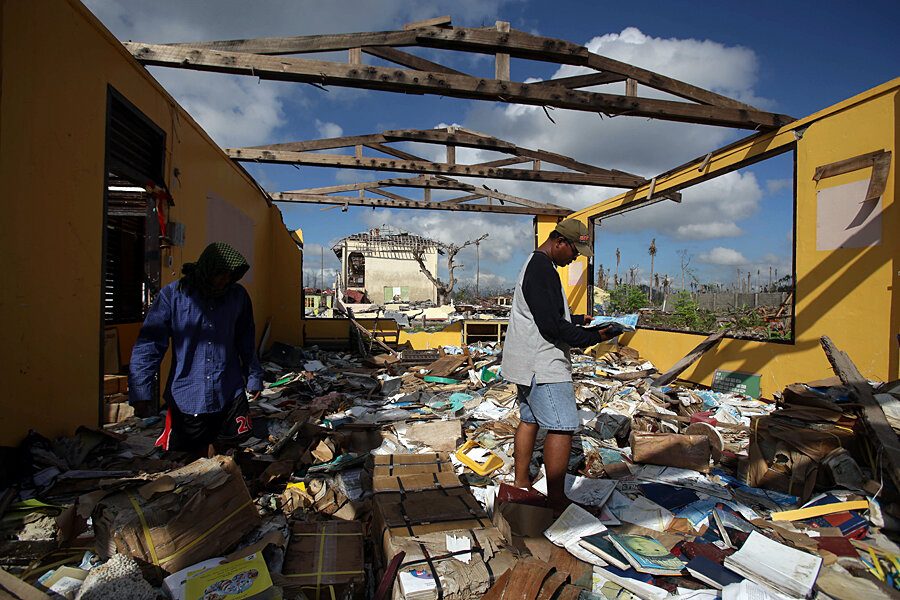Typhoon Haiyan: death toll tops 6,000 as officials target longterm recovery
Loading...
Five weeks after Typhoon Haiyan hit The Philippines last month, the country's government released updated figures of its heavy toll, saying that more than 6,000 people have been confirmed dead.
Today's new figure was a result of continuing relief and recovery efforts in the hardest-hit areas, in particular the coastal city of Tacloban, according to this morning’s update by Maj. Reynaldo Balido, the spokesman for the National Disaster Risk Reduction and Management Council, the Associated Press reports. Nonstop work to sift through and clear the heaps of debris has slowly been increasing the tally over the past weeks, from around 3,000 reported in the disaster’s immediate aftermath.
Reporting from Manila, the Associated Press writes that disaster officials emphasized longer-term efforts to help survivors regain their footing, even as the grim statistics pushed upward.
The overnight tally pushed the overall death toll to 6,009 while 1,779 others remain unaccounted for, the government agency said, making the typhoon the deadliest natural disaster on record to hit the Philippines.
Social Welfare Secretary Corazon Soliman said that temporary bunkhouses and emergency shelters were being constructed and residents given cash in exchange for work, including repacking and hauling relief goods.
"We will provide materials to rebuild their houses, however, we stressed to the local governments that new shelters have to be built 40 meters away from the shoreline on high tide," she said.
The update comes as affected people gradually return to their home areas. A representative of the United Nations High Commissioner for Refugees told The Wall Street Journal that makeshift houses have sprung up in areas leveled by the storm surge, and that the agency is working with local officials to help reopen more schools in time for classes to resume after Christmas break.
Even so, “provisions for life-saving assistance remain a top priority," the representative added.
A press release issued by UNHCR last week highlighted the continuing need for basic household items and the ongoing struggle to reach very far-flung communities:
UNHCR is working with the government and partners to focus on communities that have not received assistance. This includes some indigenous communities and to those situated in more remote locations.
Around 16 million people remain displaced by the typhoon, even as relief aid continues to pour in from near and far. And in the midst of the ongoing cleanup effort, survivors struggle to rebuilt their livelihoods and regain a semblance of normalcy. For them, recovery is just beginning.







